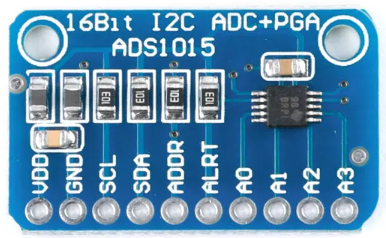https://github.com/wollewald/ads1115_we
An Arduino library for the 16-bit, 4 channel ADS1115 ADC. Convenient to use. All features of the ADS1115 are implemented, including alert functions.
https://github.com/wollewald/ads1115_we
adc ads1115 arduino arduino-library attiny
Last synced: about 2 months ago
JSON representation
An Arduino library for the 16-bit, 4 channel ADS1115 ADC. Convenient to use. All features of the ADS1115 are implemented, including alert functions.
- Host: GitHub
- URL: https://github.com/wollewald/ads1115_we
- Owner: wollewald
- License: mit
- Created: 2020-06-27T10:56:18.000Z (almost 5 years ago)
- Default Branch: master
- Last Pushed: 2025-02-08T12:06:23.000Z (4 months ago)
- Last Synced: 2025-03-29T11:08:34.452Z (2 months ago)
- Topics: adc, ads1115, arduino, arduino-library, attiny
- Language: C++
- Homepage: https://wolles-elektronikkiste.de/en/ads1115-a-d-converter-with-amplifier
- Size: 944 KB
- Stars: 112
- Watchers: 9
- Forks: 26
- Open Issues: 1
-
Metadata Files:
- Readme: README.md
- License: LICENSE
Awesome Lists containing this project
README
# ADS1115_WE
An Arduino library for the 16-bit, 4-channel ADS1115 and the 12-Bit, 4-channel ADS1015 ADC with gain and alert functions.
I have have tried to optimize the library for convenience to use. If you try the examples I recommend to start with `Single_Shot.ino`.
You can find more details here:
https://wolles-elektronikkiste.de/ads1115 (German)
https://wolles-elektronikkiste.de/en/ads1115-a-d-converter-with-amplifier (English)
All features of the ADS1115 and ADS1015 are implemented, including alert functions.
The examples are written for the ADS1115 with one exception, which is Continuous_ADS1015.ino. This shows how to "translate" the sketches
for the ADS1015. Most enum values like ADS1115_RANGE_6144 and ADS1015_RANGE_6144 are even identical. The exceptions are the enum values for
the conversion rate.
In version 1.4.1 I have implemented the option to use TinyWireM instead of Wire. Therefore the library can be used, for example, on
an ATtiny85.
If you like the library it would be cool if you can give it a star. If you find bugs, please inform me.
Some remarks on the continuous mode
When you change channels in continuous mode using ``setCompareChannels()``, the current conversion will be completed first before the next
measurement for the new channel will be started. This means you have to wait the time of two conversions before you can be sure that a measured
value of the new channel is available. In contrast to the single shot mode, there is no way to determine when this process is completed.
Therefore I added delays according to the rate that you have set. The disadvantage is that changing channels is a blocking process.
If you don't want blocking code, you can use the function ``setCompareChannels_nonblock()``. But please be aware that you have to ensure yourself
that the measured value has been obtained from the new channel.
I recommend using the single shot mode instead, because in this mode you can immediately start a new measurement on the new channel and you can
check whether the current conversion is completed with the ``isBusy()`` function.
Beware of fake modules
There are ADS1115 modules which use ADS1015 ICs and also there are ADS1015 modules which are based on ADS1115 ICs. In theory you should
recognize the IC by its label which is "BRPI" for the ADS1015 and "BOGI" for the ADS1115. But I have even found ADS1115 ICs labeled with
"BRPI" which is definitely a fake. The difference between the ADS1115 and the ADS1015 is a) the 16-bit vs. 12-bit resolution an b) the speed.
This example is almost funny:

If you want to find out what you really have on on your module, then try the example sketch "Who_Am_I.ino". Do not change anything apart from
the I2C address if necessary.